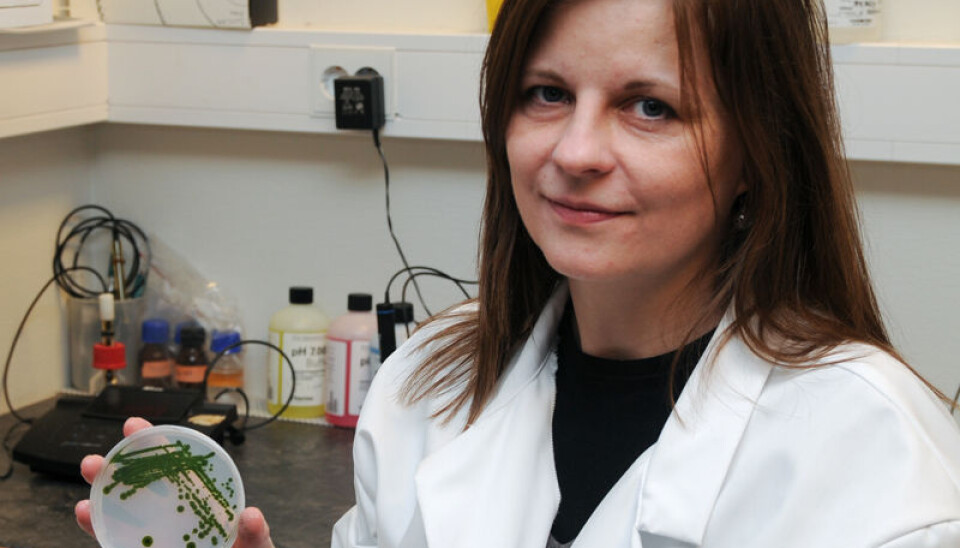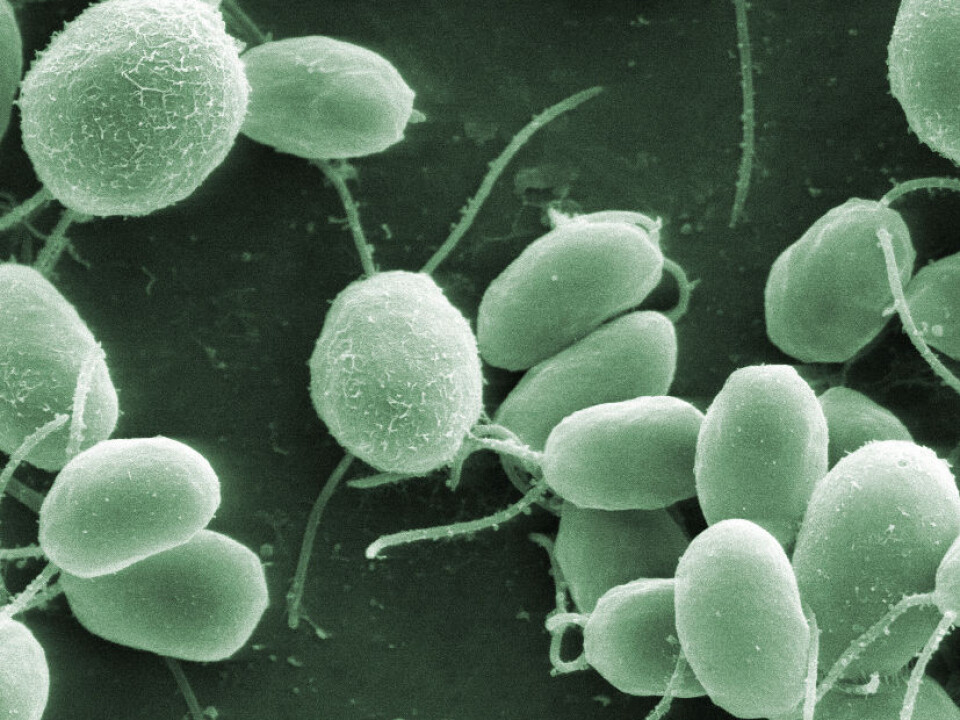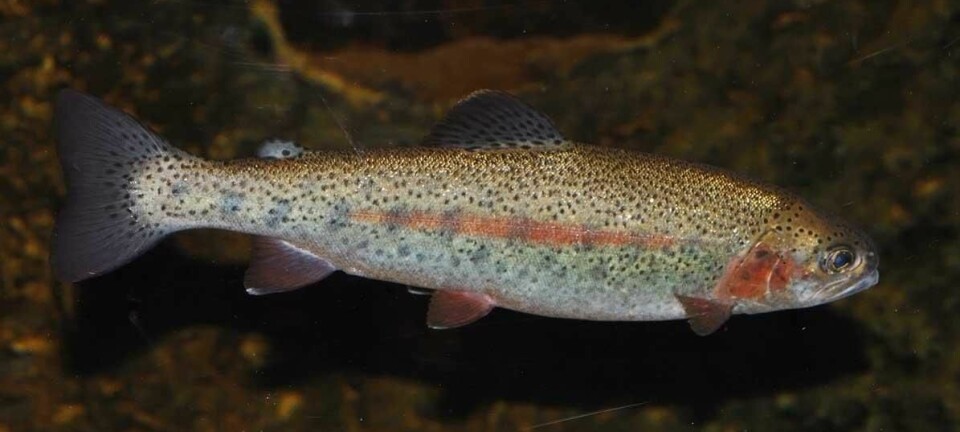
All-in-one algae
The alga starts by making hydrogen for fuel cells and consuming CO2. Then it can be converted into useful products like health food, fish fodder, medicines, construction materials and biofuels.
Denne artikkelen er over ti år gammel og kan inneholde utdatert informasjon.
Algae have been cultivated as food for hundreds of years, particularly in Asia. Health food stores in our part of the world also market algae tablets full of anti-oxidants, unsaturated fatty acids, vitamins and other beneficial substances.
Algae have also been used to feed farmed fish. Algae fodder for aquaculture is a big industry.
Algae used as an energy source are now being referred to as the third generation of biofuel. The aviation industry has conducted test flights using biofuel made from algae. But algae can also be a source of energy by producing hydrogen for fuel cells.
Biohydrogen
Hydrogen production can be combined with several other processes, all individually profitable and amounting to an all-in-one solution yielding a number of products. Kari Skjånes recommends this solution.
“Biohydrogen is quite new as a research field,” she explains.

Skjånes is a researcher at the Soil and Environment division of Bioforsk, and has a doctorate from the University of Bergen. Her tests have been made with the alga species Chlamydomonas noctigama.
“Other algae could certainly produce more hydrogen. But no one has found the ideal alga yet; we’re still looking,” she says.
In her doctorate she discusses a variety of likely candidates and points out that there’s a sizeable selection to choose from.
Skjånes does not exclude the possibility that genetically modified algae could be the most suitable. But here in Norway she has more faith in a wild species because of the country’s stringent rules regarding genetically manipulated products.

Underfed on sulphur
She has investigated a relatively new method for hydrogen production that involves subjecting the algae to stress by limiting their access to nutrients. They are raised in a low-sulphur environment.
“When the algae are given insufficient sulphur, they stop growing. But they continue to absorb energy through sunlight. The lack of an outlet for releasing this energy leads to cellular damage. One way to use up this energy and relieve the stress is to produce hydrogen,” says Skjånes.
A drawback with this method is that after a while the lack of sulphur leads to the death of the algae.
Instead of prolonging the life of the algae and lowering the effect by keeping them going with some sulphur, Skjånes proposes the all-in-one solution:
First maximum hydrogen production, then utilisation of the biomass for other purposes.
Abundance of products
In addition to health food products, algae can be used in the cosmetics and the pharmaceuticals industries, for instance as skin creams and bactericides.
Pigments can also be made from algae. The red colour of salmon and prawns at the fish counter stems increasingly from such pigments.
Algae can be used as agricultural fertilisers and in making new plastic materials. Their utility in making biofuels is already renowned and includes the huge advantage that algae production doesn’t have to steal cultivated land.
But Skjånes stresses in her doctoral thesis that biofuels can probably be produced more efficiently in specialized processes than in the combined ones she proposes.
But weighing heavy in the balance, biohydrogen could be used in cars with fuel cells that emit no harmful discharges. Hydrogen is currently produced through industrial processes that result in pollution.
Carbon traps
When an alga produces hydrogen it absorbs CO2 in the photosynthetic process.
This carbon dioxide can either be drawn from the atmosphere or directly from discharge gasses emitted, for instance, by a fossil-fuelled thermal power plant.
In the latter case it is unlikely that the resulting biomass could be converted into food for human consumption. Such exhaust gas can contain toxins including heavy metals. Even if these were removed from the waste gas, Skjånes doubts that health food stores would be scrambling to sell such products.
Well-suited in the summer
“The facilities producing hydrogen in this way will require lots of space, most likely several square kilometres. Huge amounts of algae are needed to produce sufficient quantities of hydrogen,” says Skjånes.
On the upside, such facilities can be placed at sites that are unsuited for agriculture, for instance over bodies of water, on mountains or in deserts. There are limits of course, for example the Sahara would be too hot.
Skjånes thinks Norway would be well-suited for this industry, but only during the summer half of the year. In the winter it is too cold and too dark.
Algae thrive best in temperate conditions ranging from 20° − 30° C and hydrogen production requires meticulous control of temperatures and amounts of light.
Investments needed
“This is clearly interesting and exciting, and I’m crossing my fingers in hope of its success,” says Marius Gjerset from the environmental organization Zero.
He has worked with algae production for biofuel and knows it will be a long time before we’ll be seeing large-scale production.
“If algae could trap carbon dioxide from thermal power plants we’re talking about a gigantic volume. If you also want to produce hydrogen you face the challenge of storing and transporting it,” he says.
Nevertheless, Gjerset says there are no major unsolved technological barriers for such large-scale industrial facilities. First and foremost this calls for gigantic investments from governments and industry.
---------------------------------
Read this article in Norwegian at forskning.no
Translated by: Glenn Ostling































